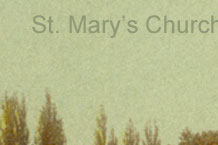 |
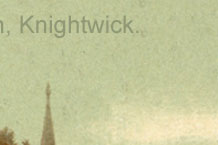 |
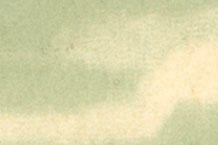 |
 |
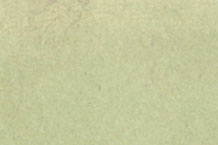 |
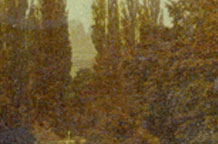 |
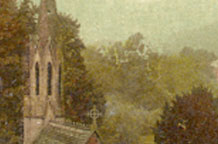 |
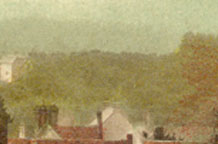 |
 |
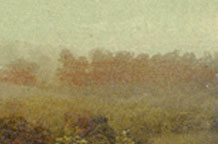 |
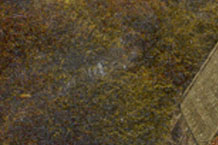 |
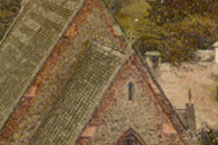 |
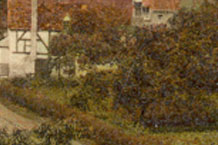 |
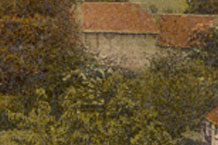 |
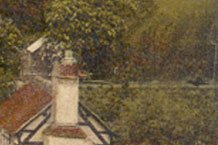 |
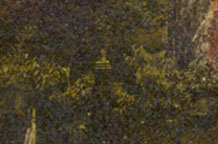 |
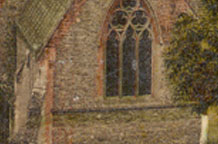 |
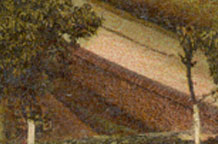 |
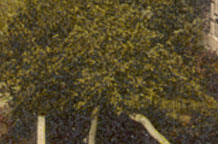 |
 |
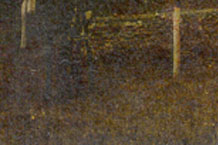 |
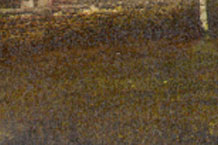 |
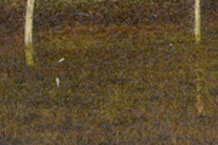 |
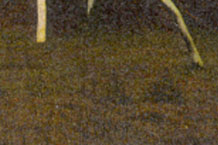 |
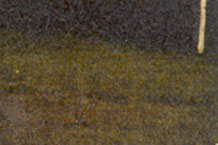 |
I love this old photo of Knightwick, taken from Bridge Meadow, in the distance I can see what I think is the Turnpike House, interestingly you can see that there was a large house on the other side of the Talbot Inn, which does not exist today. Also in the foreground is the little black and white cottage owned by Ankerdine farm and where one of their farm workers would have lived. Ted and Joan Morris were the last to live there before it was demolished to make way for the two dwellings seen there today. Nearer the Talbot is a small orchard where today there is a semi-detached dwelling owned by the farm for the farm workers. No building exists in front of the church as the old telephone exchange which was built there and is now the village hall was not envisaged at this point in time.
The Worcester Chronicle and Provincial Railway Gazette. 6th June, 1855.
CONSECRATION OF KNIGHTWICK NEW CHURCH.
As the traveller passed along the road by the side of the winding Teme, some seven or eight miles from Worcester, amidst the rich and picturesque scenery which the vale of that river affords, he will be sure to have his attention drawn to an old church with an ill-shapen tower and windows much like those in four pair attics, whose roof is worn out and altogether in a miserable state of dilapidation, very much out of keeping with the beautiful country around it This is Doddenham Chapel, an appendage to the old parish church of Knightwick, some couple of miles distant, but which is quite as mouldy and worn as its subsidiary.
The rector of the parish, the Rev. Octavius Fox, having set himself to remedy so undesirable a state of things, had on Friday last the gratification of taking part in the consecration of an entirely new structure, intended henceforth to serve as the church in which all the inhabitants of this wide but somewhat thinly populated parish may worship together. The site was presented by John Freeman, Esq., of Gaines, together with a handsome donation of £50., the Dean and Chapter of Worcester (the patrons) were subscribers of £100., the Church Building Society gave a subsidy of £65., the Worcester Diocesan Society another of £100. Amongst the other subscribers were :- F. E. Williams, Esq., £200., the Misses Greswolde, £100., Francis Williams, Esq., £50., F. E. Williams, £30., Mrs. Crane, £20., Sir J. S. Parkington, Bart, M.P., £20., Rev. Canon Cradock, £10, &c., &c.
The contract for the new church was only £900., but a considerable sum will be required for the building of a mortuary chapel, in the early decorated style, which it is intended to erect on the site of the former parish church, as the only burial ground which the parish possesses is at that spot. Amongst the monuments in this church yard is a plain stone, inscribed to Grace Lane, the daughter of Col. Lane, of Bentley, Staffordshire, who died in 1721, aged 80. This lady was probably niece to " Mistress Jane Lane," in whose escort, Charles II, disguised as a servant, went from Bentley to Bristol, preparatory to his escape into France. The Colonel had property at Knightwick. which being in the line of route from Bentley to Bristol, the Royal fugitive, and the young lady who rode behind him, perhaps rested here.
The new church, dedicated to St. Mary, stands at the foot of Ankerdine Hill, a few yards up the road leading from Knightsford Bridge to Martley, and with its background of luxuriant verdure looks as simply elegant a piece of modern ecclesiastical architecture as any of which our county can boast. We only wish it could be made a little more open and visible to the Worcester road. It is built of the dark Ankerdine Hill stone, in random courses, scarcely any pieces of stone used in the walls being more than six inches long, and the mason's work is admirable. We do not know where we could point to walls of this character better put together, or with a more tasteful and handsome appearance than they have as a whole. The buttresses are of Bromyard Down stone, and the facings and spire of Bath stone. The octagonal spire, 36 feet in height, which is peculiarly elegant, having a canopied base, with lancet light beneath each canopy, rests on a buttress running up the centre of the western wall; it completes and adorns the building in an admirable manner, and was, we understand, most handsomely erected gratuitously by Mr. John Norman, of Worcester, who took the contract for the masonry.
The church consists of a chancel and nave, with vestry on the north of the chancel, and the entrance porch on the north side of the nave, near the western end; the length of the building is 70 feet; breadth, 21 feet; height, 38feet to the point of the roof. Style of architecture, Early Decorated. East window of three lights, with three quatrefoils in the head, and bosses skilfully carved; a small single light on each side of the chancel, and string-course passing underneath all round ; the nave is lighted by three two light windows on the south and two on the north ; and the west wall has two single lights with double trefoil heads. There is a well constructed open timber roof throughout, that of the chancel resting on moulded stone corbels. In the chancel are stalls, with carved poppy-head finials; pulpit and reading-desk correspond on the north and south sides of the chancel arch; both are of stained wood, as are the seats, which have no ornament; but are provided with doors. Underneath the sittings the flooring is of wood, elsewhere of coloured tiles. The roof is of steep pitch, in alternate courses of blue and red tiles, which has a remarkably pleasing effect. It is surmounted by Brosely ridge tiles, with ornamental points, in triplets ; handsome floriated crosses, in Bath stone, ornament the east gables of chancel and nave. A semicircular font, massive, but entirely devoid of ornament, and supposed to be Norman, taken from the old church, has been divested of its whitewash covering and remounted on a new base in the new edifice. The altar covering, which is composed of crimson cloth, with the sacred monogram I.H.S. in the centre, together with two handsome mats, were kindly presented by Mrs. Fox. There are nearly 200 sittings in the church, 125 of which are free; and as the populations of both Knightwick and Doddenham do not number many more than 400, the church accommodation is now supposed to be ample. The only wonder is how so substantial and handsome an edifice could have been erected for so very moderate a sum. The whole structure is extremely creditable to the clever architect, Mr. A. E. Perkins, of Worcester, and to all the trades-men employed. The masonry and stone-carving, as we have already said, was executed by Mr. John Norman; the carpentry and ornamental work, by Mr. W. Shellswell; the plumbing, by Mr. Greenway; and the ornamental ironwork of the doors and hinges, &c., by Mr. Crump, blacksmith, all of Worcester.
The day fixed for the opening of the church, which has only been a twelvemonth in building, proved most inauspicious. A Scotch mist hung an impenetrable veil over mountain and stream, and the weather indeed much more resembled what we might expect on a first of November than on the first of June. Had the skies been propitious a very large company might have been expected, for even as it was the church was filled to overflowing ; benches in the aisles not sufficing to find seats for the congregation, many of whom were obliged to stand during the whole service. The carriages began to roll up about 11 o'clock, and amongst the gentry and clergy who came from the surrounding district, to be present on this interesting occasion were, the Bishop of the Diocese, the Very Rev. the Dean of Worcester, Mrs. Peel, Rev. H. and Peel, Rev. H. S. Cocks, and Miss Cocks. Miss Boraston, Jno. Freeman, Esq., Mrs. Freeman and the Misses Freeman. Dr. Jas. Nash and Miss Nash, James Best, Esq., and the Misses Best, the Misses Probyn, G. J. A. Walker, Esq., and Miss Walker, Rev. I. J. Pearson, Rev. H. J. Hastings and Mrs. Hastings, Capt. Gordon, R. Allies, Esq., and Mrs. Allies, Rev. A. W. and Mrs. Ingram, Rev. — Childe, Rev. D. Melville, Rev. G. Sandbach, Rev. J. Palmer, Mrs. Palmer and the Misses Palmer, Rev. E. T. Wheeler and Miss Wheeler; Rev. H. Brown, Rev. E. J. Newcombe, Hyla Holden, Esq, Rev. Dr. Bartlett, Rev. H. J. Wilding and Mrs. Wilding. Rev. R. Sarjeant, J. H. Clifton, Esq. C. Evans, Esq., Rev. W. Thursby, Mr. T. Walker and party, Lulsley Court; Mr. and Mrs. Jas. Coucher, St. John's, Worcester; Mr. and Mrs. Edward Southall, Ankerdine Farm; Mr. W. Southall, White House, Lulsley; Mr. Moore and family, Ham Castle; Mr. and Miss Southall, of Birmingham; Mr. and Mrs. Rogers, of the Berrow; Mr. Mac Dougall, Mr. D. Eaton, Mr. Norman, Mr. Baxter, &c.
The Bishop was met at the door of the church by the rector and most of the clergy present in their gowns, and a petition, praying him to consecrate the edifice, was there presented to him and read aloud by Mr. J. H. Clifton, the registrar of the diocese. Having signified his assent he proceeded to the communion table, preceded by his apparitor bearing the gold mace, and followed by the Rev. R. Sarjeant, as the representative of the chancellor of the diocese, and the other clergy. As he advanced up the aisle his lordship repeated the 24th Psalm, "The earth is the Lord's, and the fullness thereof," the clergy and congregation saying the alternate verses.
The Bishop having taken his seat near the Communion the deed of conveyance was handed to him, which having been laid on the table, lie read the exhortation, and offered up the appointed prayers, the responses to which were solemnly rendered by the congregation. The sentence of consecration having been read by the acting Chancellor, the Rev. R. Sarjeant, the Lord Bishop attached his name to the petition, after which. the Rev. O. Fox, the Rector, proceeded with the usual morning service. The Psalms read on the occasion were the 84th, 122nd, and 132nd. The first lesson was read by the Rev. J. Wilding, of St. Helen's, Worcester, from the 1st, Kings, 8 chap., 22nd to 62nd verse. The second from Heb., 10th chap., 19th to 25th verse. The litany and the rest of the service was impressively read by the Rev. T. L. Wheeler, Hon. Canon of Worcester Cathedral. Although the responses were very generally and very solemnly given by the congregation yet the total absence of music was felt to be a very sombre omission, and we were rather surprised that the cathedral choir had not been engaged to take part in the occasion. Even the singing of the hymns was feeble and timid in the extreme, although the tunes used for the occasion were of the simplest character, and copies of the music for them had been lithographed and placed in every seat. The first tune—fine old "York" was sung just twice as fast as it ought to be.
The sermon on the occasion was preached by Dr. Peel, the Dean of Worcester, who took as his text Matt. xxv., part of 35 v., " I was an hungered, and ye gave me meat." The Rev. Dr. observed that the occasion which had brought them together was happily now less rare than in past years, yet a church consecration was still an infrequent event, and probably many who now heard him were never before present at such a ceremonial. Happily, the spirit of Christian liberality and sense of obligation and duty now pervaded all classes of society to a much greater extent than formerly – temples were much more frequently raised for the worship of God in which the poor might be fed with the bread of life - and Christians might with some hope anticipate the time when the whole of the inhabited world would witness a constant repetition of spectacles such as was that day presented to them. Great stress was everywhere in Scripture laid upon the practice of charity and benevolence, and it was enforced as in the text by reference to the final judgment and the dread issue of the award then to be given, and elsewhere, by reminding us of our common origin, but principally by the example of our Saviour himself and the obligations laid upon us by His self-denial and sacrifice on our behalf. And if acts of charity intended merely to benefit the body were so important and so acceptable in the sight of God, much more would acts of charity for the soul be Pleasing to him. To furnish means of setting before the sinner the way of salvation and providing consolation for the afflicted were deeds that would certainly have their reward. They that turn many to righteousness should shine as stars for ever and ever. It was the high and holy prerogative of the church to be on earth the representative of its Divine Master, and it was in imitation of Him, in seeking to satisfy the poor and hungry with the bread of life, that this goodly edifice, in which a congregation was now for the first time assembled, had been erected. And he was confident that not a single contributor was present whose heart did not throb with humble gratitude at having been permitted to take a part in the accomplishment of so praiseworthy a work. For himself he felt it to be a privilege to have been the first to proclaim the gospel within these newly consecrated walls, and he trusted that in doing so he was only the precursor of a long series of pious and faithful ministers devoted to the teaching of the flock committed to their charge. The parishioners were now privileged to have a good and decent building for worship in place of the dilapidated ones in which they had long been accustomed to assemble, and here Sunday after Sunday the truth would be faithfully spoken to them; he solemnly adjured them to take heed how they beard. The preacher concluded by an earnest exhortation to those amongst his hearers who were rich and prosperous in the world to give liberally of their abundance to the furtherance of God's cause. The whole of the Dean's very impressive sermon was listened to with marked attention.
While the sentences of the offertory wore read by the Rev. Robert Sarjeant, the plates were handed round by Messrs. Walker and Southall, the churchwardens, and the handsome sum, of £64. 5s. 11d. was collected.
The concluding prayers and benediction having been repeated by the Bishop, the congregation separated.
The Bishop. Dean, and party were afterwards entertained by Mr. Freeman at Gaines and a large party, numbering between 60 and 70 persons, also took luncheon at the Rectory.
The tradesmen and artisans engaged in building the church, also partook of a dinner provided for them at the Talbot Inn, at the expense of the Rector.
Mr. and Mrs. Edward Southall entertained 60 of the school children belonging to Doddenham parish to a dinner and tea that day.
It is hoped that a further improvement will ere long be carried out in this village, by the erection of schools; and we understand that a piece of land adjoining the church will probably be obtained for that purpose.
©peh

